

Watch the Live Stream of the Spacewalk on November 17, 2022 (video)
Don’t miss the chance to witness the incredible spacewalk happening on November 17, 2022, with Oleg Artemyev as the main astronaut. Tune in to the live broadcast to experience the thrill and excitement of this extraordinary event.
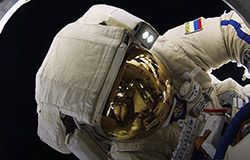
Watch the live stream of the spacewalk being carried out by the Russian crew members Sergey Prokopyev and Dmitry Petelin on November 17, 2022. The objective of this activity is to prepare for the transfer of the radiator using the ERA manipulator. The opening of the exit hatch of the “Search” module is scheduled for November 17, 2022, at 17:20 Moscow time.
Posted in ISS, On Orbit, News, Work Tags: vkd, spacewalk, mx, news from weightlessness, work on the mx, report from orbit
Broadcast of the Soyuz MS-21 spacecraft’s return to Earth on September 29, 2022 (video)
On September 28, 2022, Oleg Artemyev announced the upcoming broadcast of the return to Earth of the S.P. Korolev spacecraft (Soyuz MS-21). Stay tuned to witness this historic event!
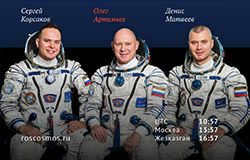
On September 29, 2022, there will be a live broadcast of the S.P. Korolev spacecraft (“Soyuz MS-21”) returning to Earth with the “Bauman” crew from the International Space Station (ISS). The crew, consisting of Oleg Artemyev, Denis Matveyev, and Sergey Korsakov, has been in space for 195 days, conducting numerous experiments and completing 5 spacewalks. Don’t miss the opportunity to watch the closing of hatches between the spacecraft and the ISS at 07:00 Moscow time. This remarkable event will be broadcasted by Roscosmos. Stay tuned for updates!
Published in ISS, ISS-66/67, On Orbit, News, Work Tags: mks, news from weightlessness, Oleg Artemyev, landing, work on mks, report from orbit
Watch the Live Stream of the Spacewalk on September 02, 2022 (video)
Tune in on September 2, 2022 to witness Oleg Artemyev’s exciting spacewalk!

Today, on September 02, 2022, our astronauts Oleg Artemyev and Denis Matveev are scheduled to conduct a spacewalk as part of the Russian program VKD-54. The estimated duration of the spacewalk is 6 hours and 18 minutes. The live broadcast of the spacewalk will start at 17:00 (Moscow time) on September 02, 2022. You can also watch the broadcast on the following platforms:
– YouTube: https://youtu.be/lpaJe98NabI
– Rutube: https://rutube.ru/video/b79c30209ce04877af13972652e99a70
– NASA TV channel: http://artemjew.ru/mks/mks-online/
The spacewalk will involve various tasks and activities […].
This news has been published under the ISS, ISS-66/67, On Orbit, News, Work tags, featuring VKD, spacewalk, MX, news from weightlessness, Oleg Artemyev, work on MX, report from orbit, and photo.
Watch the Live Spacewalk on August 17, 2022 (video)
Tune in on August 17, 2022 to witness Oleg Artemyev’s spacewalk.


Today, on August 17, 2022, our astronauts Oleg Artemyev and Denis Matveev will be embarking on a spacewalk as part of the Russian program (VKD-54). The estimated duration of the spacewalk is approximately 7 hours. The live broadcast will commence at 16:20 (Moscow time) on August 17, 2022. Additionally, the broadcast can be accessed on the NASA TV channel – http://artemjew.ru/en/mks/mks-online/. Tasks for the spacewalk include:
Published in ISS, ISS-66/67, On Orbit, News, Work Tags: vkd, spacewalk, mx, news from weightlessness, Oleg Artemyev, work on mx, report from orbit, photo
Watch the Spacewalk Live on July 21, 2022 (video)
Join Oleg Artemyev on July 21, 2022 for an unforgettable spacewalk experience.
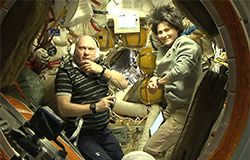
The live broadcast will begin on July 21, 2022 at 16:45 Moscow time. Cosmonaut Oleg Artemyev can be seen waving to the camera as he carries out tasks outside the Nauka multipurpose laboratory module during a spacewalk on April 18, 2022. The spacewalk lasted for a total of six hours and 37 minutes and involved outfitting Nauka and configuring the European robotic arm on the Russian segment of the International Space Station.
Posted in ISS, ISS-66/67, On Orbit, News, Work Tags: EVA, spacewalk, ISS, news from space, Oleg Artemyev, work on the ISS, report from orbit, photo
Watch the Live Stream of the Russian Crew’s Spacewalk on April 28, 2022 (video)
On April 28, 2022, Oleg Artemyev will be embarking on a spacewalk.

On April 28, 2022, the 53rd scheduled spacewalk is set to take place. This time, it will be carried out by the crew members of the 67th long-duration expedition to the International Space Station (ISS) – Russian cosmonauts Oleg Artemiev and Denis Matveev. The objective of this extravehicular activity is to continue the preparations for the operation of the ERA remote manipulator on the Russian segment of the ISS.
Posted under: ISS, ISS-66/67, On Orbit, News, Work Tags: vkd, mx, news from weightlessness, Oleg Artemyev, work on the mx, report from orbit, photos
Watch the Live Stream of the Russian Crew’s Spacewalk on April 18, 2022 (video)
Oleg Artemyev on April 18, 2022
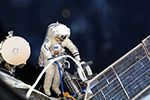
The live broadcast started on April 18 at 17:15 Moscow time. The preliminary exit cyclogram No. Operation content Time of operation Time of operation, min Text time, Moscow time 1 Denis Matveev opens the exit hatch No. 1 of the module “Poisk” 6 17:25 2 Cosmonauts install a protective ring on the hatch trim 5 17:30 3 Denis Matveev leaves the “Poisk” 3 17:33 4 Denis Matveev adapts to the conditions of open space 5 […].
Published in ISS, ISS-66/67, On Orbit, News, Work Tags: vkd, mx, news from weightlessness, Oleg Artemyev, work on mx, report from orbit, photo
Pre-Spacewalk Footage (video)
April 17th, 2022 by Oleg Artemyev

Prior to the spacewalk, we conducted our initial training session in spacesuits! Our upcoming spacewalk, set to take place on April 18, will be conducted by Denis Matveev and myself as part of the ongoing ISS expedition. During the training, we thoroughly examined our medical conditions, systems, and the integrity of our spacesuits, the “Orlan-MKS”, which we will utilize for extravehicular activities (EVA). In addition, we had the opportunity to “try on” the spacesuits to ensure a proper fit.
Published in ISS, ISS-66/67, On Orbit, News, Work Tags: vkd, mx, news from weightlessness, Oleg Artemyev, work on mx, report from orbit, photo
Video of SpaceX Ax-1 Mission Launch
Oleg Artemyev on April 8, 2022

At 11:17 a.m. ET on Friday, August 8, Falcon 9 successfully completed the launch of Axiom Space’s Ax-1 mission. This marked Dragon’s fifth manned trip to the International Space Station and took place at the historic Launch Complex 39A (LC-39A) at NASA’s Kennedy Space Center in Florida. The launch was livestreamed on the SpaceX YouTube channel
Posted in ISS, News Tags: video, truck, Progress
Expedition ISS-67
On March 18, 2022, Oleg Artemyev embarked on the Expedition ISS-67.
This incredible journey to the International Space Station (ISS) marks a new chapter in space exploration.
Taking samples from panels on the ISS //Work on the ISS// (video)
On March 10, 2022, Oleg Artemyev conducted a fascinating task during his time on the ISS.
He collected samples from the panels on the ISS, contributing to valuable research and advancing our understanding of space technology.

Posted under ISS, ISS-55/56, News Tags: video
Changing the urine container // Restroom on the International Space Station // (video)
March 5, 2022 by Oleg Artemyev

Published in ISS, ISS-55/56, News Tags: video, toilet
Joint Dinner of Russian and American Crews on the ISS //VIDEO 360//
On February 28, 2022, Oleg Artemyev documented the joint dinner of the Russian and American crews aboard the International Space Station (ISS).

Posted on the International Space Station (ISS) website, this video showcases the unique joint dinner of the Russian and American crews currently residing on the ISS. The video provides a fascinating glimpse into the space food and the camaraderie between the crew members. This event highlights the collaborative efforts and shared experiences of the international space community.
Witness the Excitement: Unveiling the Hatch of the Spacecraft “Progress” //A Day in the Life of the ISS// (video)
On February 23, 2022, Oleg Artemyev, a member of the International Space Station crew, shared a captivating video capturing the momentous occasion of opening the hatch of the spacecraft “Progress.” This video offers a unique perspective on the daily tasks and operations carried out by the dedicated astronauts on board the ISS.

Posted in the International Space Station, ISS-55/56, News Tags: video, truck, Progress
Exploring the Space Station, Deciding on a Location for a Exclusive Meeting (video)
February 18, 2022 Oleg Artemyev

Posted in the International Space Station, Expedition ISS-55/56, News Categories: cupola, video, private conference
Shooting in Space. Aspire to be a Prominent Actress? (video)
November 4, 2020 by Oleg Artemyev

Channel One and Roscosmos have collaborated to announce an exciting competition, where the lucky winner will have the incredible opportunity to star in the first-ever feature film filmed in space. Are you interested in participating in the casting process? Make sure to carefully review the terms and conditions and complete the application form by visiting this link: https://www.1tv.ru/shows/kosmos/polet-v-kosmos-kasting.
This news has been published in ISS and falls under the categories of video and mx.
November 20, 2020 – Celebrating 20 years of the International Space Station (ISS)
On November 2, 2020, Oleg Artemyev reflected on the incredible achievements of the ISS.

The International Space Station (ISS) is celebrating its 20th anniversary.
Published in ISS, News Tags: video, mx, holidays, holidays on the ISS
Spectacular Sunrise on the ISS (video)
On July 24, 2020, Russian cosmonaut Oleg Artemyev captured a breathtaking sunrise from the International Space Station.

The International Space Station (ISS) experiences 16 sunrises per day.
Reported in the Earth, ISS, On Orbit, News section, the video captures the beauty of a sunrise in orbit, highlighting the solar panels of the ISS.
Watch the Earth from the Cupola (video)
On July 16, 2020, astronaut Oleg Artemyev shares his observations.

Posted in Earth, ISS, On Orbit, News Tags: cupola, video, Oleg Artemyev
Video: Bigelow Expandable Activity Module
June 10, 2020 Oleg Artemyev

The Bigelow Expandable Activity Module (BEAM) is a space station module that was developed by Bigelow Aerospace in collaboration with NASA. It was designed to be expandable and was tested as a temporary module on the International Space Station (ISS) from 2016 to at least 2020. The BEAM module arrived at the ISS on April 10, 2016, and was successfully berthed to the station on April […].
This news article is published in the ISS section and is tagged with video, mx, module, Oleg Artemyev.
Vitaly Egorov and I share our thoughts on the launch of SpaceX Crew Dragon (video recording on May 27 and 30, 2020)
Oleg Artemyev, May 31, 2020


Providing commentary on the launch on Solovyov Live is an exciting opportunity. We witnessed the first attempt to launch the manned mission SpaceX Crew Dragon on May 27, 2020. After that, there was a second attempt on May 30, 2020. This information was sourced from the YouTube channel Solovyov Live and the video blog “Open Space of the Green Cat” by Vitaly Egorov.
Published in the ISS News section, this article covers various topics including the Dragon spacecraft, Falcon rockets, space exploration, SpaceX, videos, the International Space Station (ISS), Oleg Artemyev, the crew, and expeditions.
Making History: NASA and SpaceX Successfully Send Astronauts to Space on May 30, 2020 (video)
On May 31, 2020, Oleg Artemyev reflects on the momentous occasion


Tune in on Saturday, May 30, to witness a significant event in space exploration. NASA and SpaceX are teaming up to send astronauts Robert Behnken and Douglas Hurley to the International Space Station. This mission is groundbreaking as it will be the first time since 2011 that humans will travel to the space station from U.S. territory, following the retirement of the space shuttle. Don’t miss out on this remarkable launch!
Posted in ISS, News
NASA Live! Creating a Historic Moment: NASA and SpaceX Send Astronauts to Space! (video)
On May 27, 2020, Oleg Artemyev witnessed history in the making as NASA and SpaceX successfully launched astronauts into space.

Featured in ISS, News
Exclusive exploration of the International Space Station by Drew and Luca (video)
April 10, 2020 Oleg Artemyev
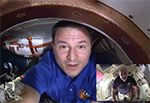
ESA astronaut Luca Parmitano and NASA astronaut Drew Morgan provide an exclusive tour of the International Space Station recorded in one continuous shot using two cameras attached together. Luca and Drew take turns guiding viewers through the various modules and spacecraft docked at the orbital outpost. They start the tour from the Soyuz MS-15 spacecraft […]
Featured in Lifestyle, ISS, News Tags: video, ISS, crew, expedition
The Soyuz MS-13 spacecraft touched down in Kazakhstan on the 6th of February 2020 (watch the video)
On the 10th of February 2020, Oleg Artemyev made an announcement.

The Soyuz MS-13 spacecraft successfully touched down in Kazakhstan on February 6, 2020, carrying the NASA astronaut Christina Koch, the ESA astronaut Luca Parmitano, and the Roscosmos cosmonaut Alexander Skvortsov.
Posted in Earth, ISS, News Tags: Alexander Skvortsov, Baikonur, video, Earth, Kazakhstan, ISS, Oleg Artemyev, landing, crew
The Soyuz MS-13 spacecraft touched down in Kazakhstan on February 6, 2020 (watch the video)
Oleg Artemyev witnessed the event on February 9, 2020

The crew of the manned Soyuz MS-13 spacecraft successfully touched down in Kazakhstan on February 6, 2020.
Notable individuals involved in the landing included Alexander Skvortsov and Oleg Artemyev. This event took place at the Baikonur Cosmodrome and was captured on video. The International Space Station (ISS) was also a part of this mission.
Spacewalk on August 15 (photo)
Oleg Artemyev on August 16, 2018

Online Russian crew’s spacewalk is currently happening in space.
Before the spacewalk, Alexander Gerst took a photo of the spacewalk.
After the spacewalk, Alexander Gerst took another photo.
Published in ISS, ISS-55/56, On Orbit, News, Work Tags: vkd, mx, news from weightlessness, Oleg Artemyev, work on the mx, report from orbit, photos
The most extended Route on the International Space Station (SD video)
On July 31, 2018, Oleg Artemyev embarked on an incredible journey.
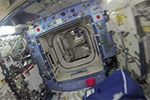
This article discusses the latest developments happening in space, specifically on the International Space Station (ISS). It provides an update on the work being done by the crew members, including Alexander Gerst, Oleg Artemyev, Richard Arnold, Serina Aunyong-Chensellor, and Andrew Fustel. The article also mentions a video report from orbit and highlights the importance of the truck in weightlessness.
July 15. The ISS Bid Farewell to the Cygnus Cargo Spacecraft (photo, video)
Oleg Artemyev waved goodbye to the Cygnus Cargo Spacecraft on July 17, 2018
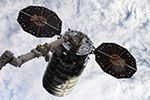
On July 15th, the Cygnus cargo spacecraft departed from the International Space Station (ISS). Serena and Alex released it using the Canadarm2 robotic arm, which was controlled by the astronauts from inside the ISS.
This event was published in the ISS, ISS-55/56, On Orbit, News Tags: Cygnus, video, truck, mx, news from weightlessness, report from orbit, photo
July 10. Progress MS09 successfully docks with the International Space Station (photo, video)
On July 10, 2018, Oleg Artemyev witnessed the successful docking of Progress MS09 to the International Space Station.
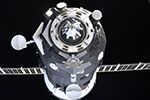
Posted in the International Space Station, ISS-55/56, News. Categories: video, truck, mx, weightlessness news, Progress, orbit report, photo
Categories
Anything in here will be replaced on browsers that support the canvas element
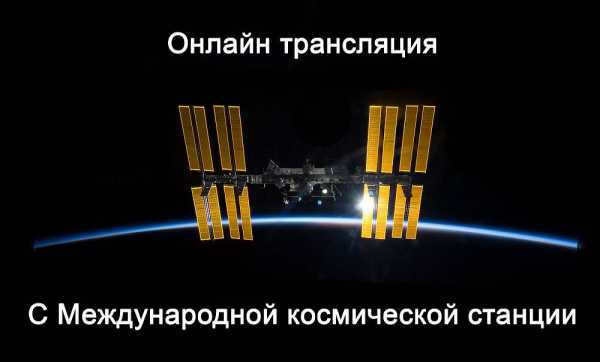
Hi there, if you have any inquiries regarding the International Space Station and its operations, we will do our best to provide you with answers.
If you encounter any difficulties while watching videos on Internet Explorer, we recommend switching to a more up-to-date browser like Google Chrome or Mozilla.
Today, we will introduce you to an intriguing NASA initiative – the ISS online webcam in high-definition quality. As you might have already guessed, this webcam is live and it streams video directly from the international space station to the internet. On the screen above, you can observe the astronauts and a glimpse of outer space.
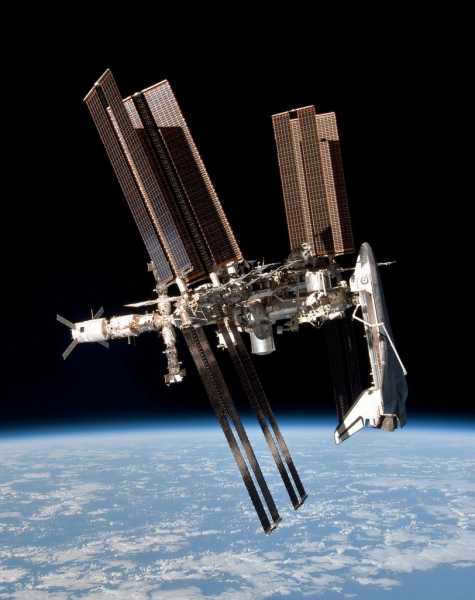
The International Space Station and the shuttle Endeavor
The ISS webcam is installed on the station’s exterior and streams live video online 24/7.
I would like to remind you that the most magnificent object in space, built by us, is the International Space Station. Its current position can be observed on a tracking system, which shows its real-time location above the Earth’s surface. This real-time orbit display on your computer was unimaginable just 5-10 years ago.
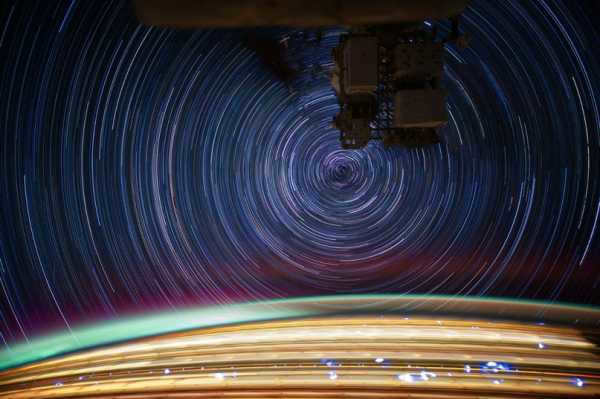

Photographing Polaris with a long exposure, the camera was pointed towards it
The size of the International Space Station (ISS) is truly astonishing: it measures 51 meters in length, 109 meters in width, and 20 meters in height, with a weight of 417.3 tons. The weight varies depending on whether the Soyuz spacecraft is docked to it or not. It is important to note that the Space Shuttle program has been discontinued, and the United States now relies on our Soyuz spacecraft.
Building the Station
An animated representation of the construction process spanning from 1999 to 2010.
The station was constructed using a modular approach, with various segments being designed and built by participating countries. Each module has a designated purpose, such as research, living quarters, or storage.
Station’s 3D Model
Construction’s 3D animation
For instance, let’s consider the American Unity modules, which act as connectors and also facilitate docking with spacecrafts. Currently, the station is comprised of 14 primary modules. The cumulative volume of these modules amounts to 1000 cubic meters, with a weight of approximately 417 tons. The station can accommodate a permanent crew of 6 or 7 individuals.
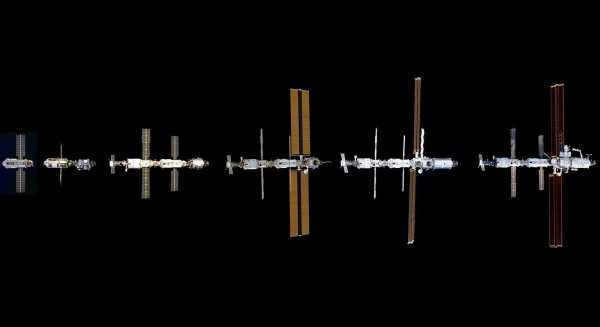
The space station was constructed by progressively connecting to the existing complex of the following block or module, which is linked to those already operational in orbit.
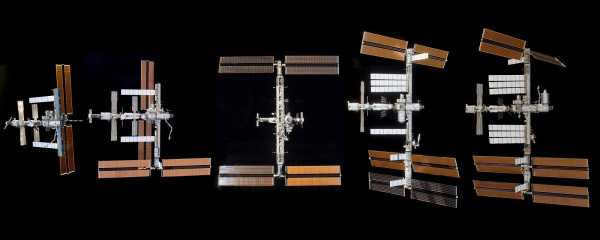
In 2013, the space station consisted of a total of 14 main modules. The Russian modules included Poisk, Rassvet, Zarya, Zvezda, and Pirs. The American modules were Unity, Dome, Leonardo, Tranquility, Desteni, Quest, and Harmony, while the European module was Columbus and the Japanese module was Kibo.
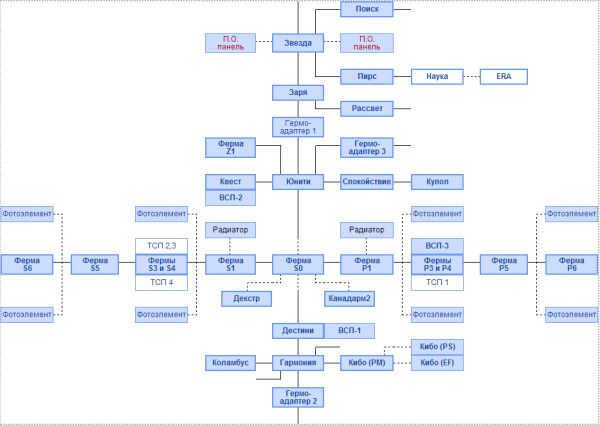
This diagram illustrates the complete array of major and minor modules comprising the station (shaded), with future delivery modules yet to be shaded.
The International Space Station (ISS) is situated at a distance ranging from 413 to 429 kilometers from Earth. Periodically, the station needs to be “boosted” as it gradually descends due to friction against residual atmospheric particles. The altitude at which it is maintained is also influenced by other factors, such as space debris.
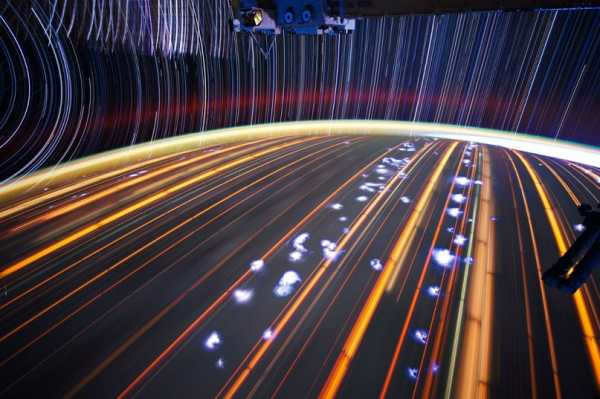
Lightning causes bright spots on Earth.
The recent blockbuster film “Gravity” vividly demonstrated the potential dangers of space debris coming into close proximity with orbiting objects, although it may have been slightly exaggerated. The altitude of an orbit is also influenced by the Sun and other less significant factors.
There is a specialized service responsible for ensuring the safety of the International Space Station’s flight altitude and protecting astronauts from any threats.
There have been instances where the path had to be altered due to space debris, hence its elevation is also influenced by external factors. The path can be observed clearly on the charts, and it is remarkable how the station traverses oceans and landmasses, literally soaring above us.
Velocity of orbital movement
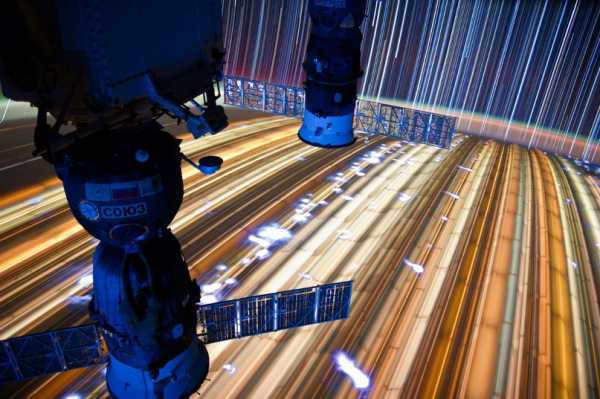
The Soyuz series spacecraft can be seen against the backdrop of the Earth in this long exposure photograph.
If you were to discover the speed at which the International Space Station (ISS) travels, you would be astounded by the immense numbers. It orbits the Earth at a speed of 27,700 km/h. To put it into perspective, this is over 100 times faster than the average speed of a typical car. It completes one full revolution in just 92 minutes, allowing astronauts on board to experience 16 sunrises and sunsets within a 24-hour period. The movement of the ISS is constantly monitored in real time by experts at the ATC and Mission Control Center in Houston. However, when watching a live broadcast, it’s important to note that the space station occasionally enters the Earth’s shadow, resulting in intermittent interruptions in the transmission.
Statistics and intriguing information
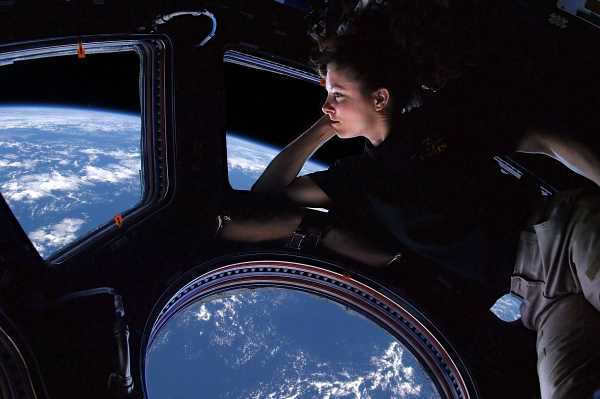
Astronaut Tracy Caldwell Dyson observes the Earth.
If we consider the initial decade of the station’s operation, it was frequented by approximately 200 individuals across 28 expeditions, setting an absolute record for space stations (our previous station, “Mir,” only hosted 104 visitors). In addition to the extended stays, the station also represents the first successful instance of commercializing space travel. The Russian space agency, Roscosmos, in collaboration with the American company Space Adventures, facilitated the journey of space tourists into orbit for the very first time.
A total of 8 tourists have ventured into space, with each flight costing between 20 to 30 million dollars, which, overall, is not excessively expensive.
By the most cautious calculations, the count of individuals capable of embarking on an authentic space expedition is approximated to be in the thousands.
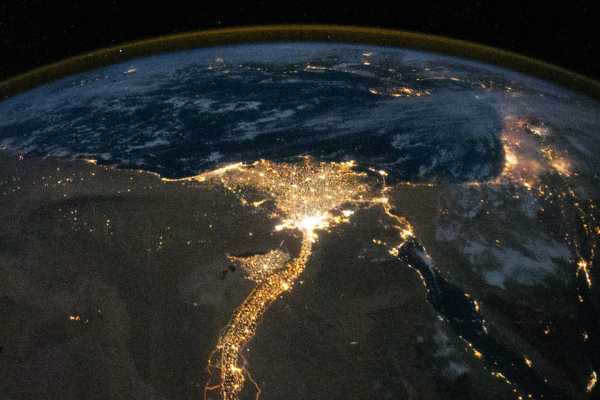
In the coming years, as the number of launches increases, the price of space travel will decrease, making it more accessible to a larger number of people. As early as 2014, private companies started offering a more affordable alternative to traditional space flights – suborbital shuttles. These shuttles offer a cheaper and less strict option for tourists, while still providing an incredible experience. From the vantage point of a suborbital flight, which reaches heights of about 100-140 km, travelers will be able to witness the breathtaking beauty of our planet from space.
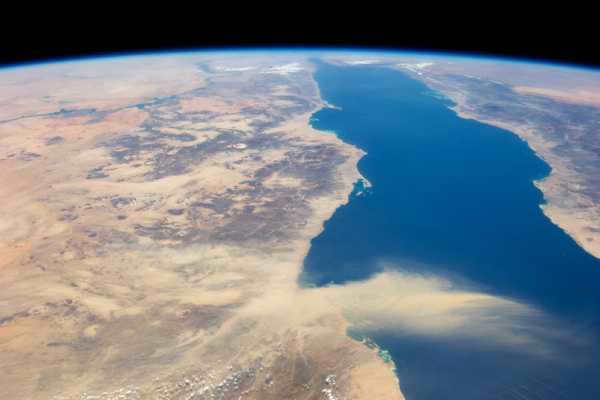
A live stream is a unique opportunity to witness astronomical events in real-time, providing an interactive experience that cannot be replicated. It’s important to note that the availability of the online station may be limited, and technical interruptions may occur during the shadow zone passage. To get the best view of Earth from the International Space Station, it’s recommended to watch the video from a camera that is directed towards our planet. Take advantage of this incredible opportunity to see our planet from orbit.
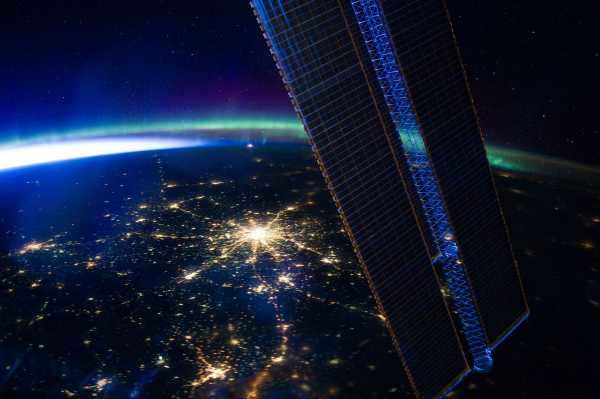
From the perspective of orbit, our planet Earth appears truly breathtaking. It offers a mesmerizing view of not just continents, seas, and cities, but also showcases the captivating beauty of polar lights and immense hurricanes, which appear even more extraordinary when observed from outer space.
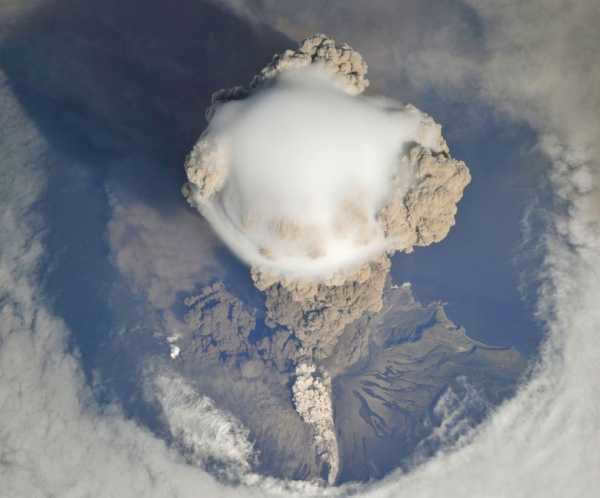
To provide you with a glimpse of how our planet appears from the International Space Station, please take a moment to view the following video.
This video provides a unique perspective of Earth as seen from space, featuring stunning images captured by astronauts using interval shooting techniques. The video is of exceptional quality and is best viewed in 720p resolution with sound. It is one of the finest compilations of images taken from orbit.
The live webcam not only offers a view of the Earth’s surroundings but also allows us to observe astronauts performing tasks such as unloading the Soyuz spacecraft or docking procedures. Please note that live broadcasts may experience interruptions due to channel congestion or signal transmission issues, particularly in relay areas. In such cases, a static NASA splash screen or a “blue screen” will be displayed.
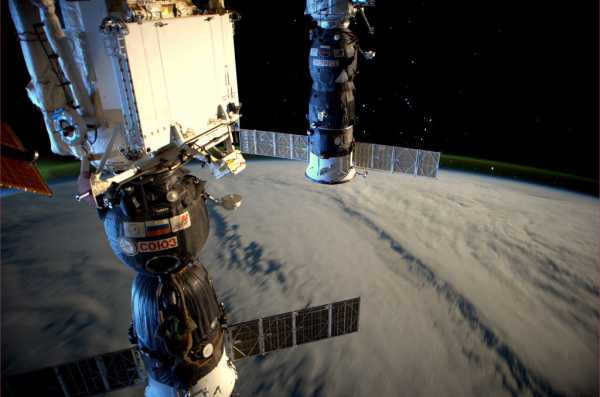

Take a look at the station illuminated by moonlight, with the Soyuz spacecrafts visible against the backdrop of the Orion constellation and the aurora borealis.
However, you can still get a glimpse of the view from the ISS online. During the crew’s downtime, internet users can tune into the live stream of the ISS and witness the starry sky through the eyes of the astronauts, all from a height of 420 kilometers above the Earth.
Crew timetable
In order to determine the periods when the astronauts are resting or active, it is essential to bear in mind that space missions adhere to Coordinated Universal Time (UTC). During winter, UTC is three hours behind Moscow time, while in summer it is four hours behind. Consequently, the camera on the International Space Station (ISS) displays the same time.
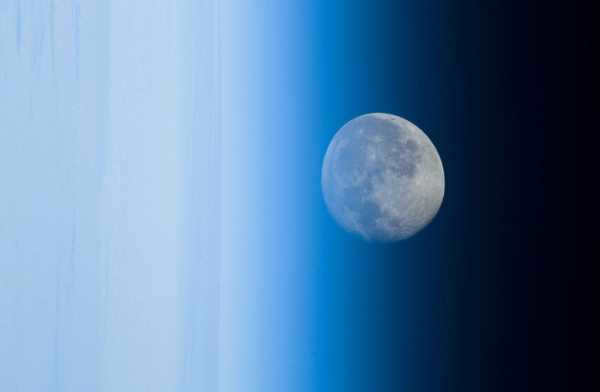
The Earth’s atmosphere distorts the appearance of the moon.
Astronauts (or cosmonauts, depending on the crew) are allotted eight and a half hours for sleep. They typically wake up at 6:00 and go to bed at 21:30. In the morning, they are required to send reports to Earth. On the American segment, the reports start around 7:30 – 7:50, while on the Russian segment, they start around 7:50 – 8:00. In the evening, reports are sent from 18:30 to 19:00. If the webcam is currently broadcasting the specific communication channel, listeners can hear the astronauts’ reports. Sometimes, the broadcast is in Russian.
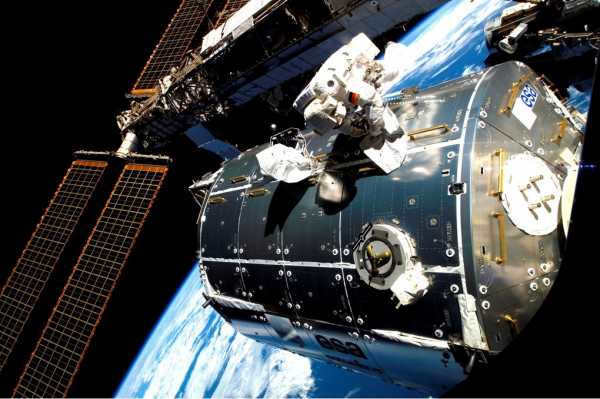
Astronaut Hans Schlegel is currently working in outer space
Just a reminder that you are currently tuning in to NASA’s service channel, which was initially designated solely for experts. However, everything changed on the eve of the station’s 10th anniversary, and the ISS online camera became accessible to the public. And, up until this day, the international space station remains available online.
Spacecraft docking
One of the most thrilling moments captured by the web camera is the docking process of our “Soyuz”, “Progress”, Japanese, and European cargo spacecraft. Additionally, astronauts and cosmonauts often venture into outer space during these events.
However, a minor issue arises due to the overwhelming demand for the live stream. As hundreds and thousands of people tune in to watch the ISS video, the channel experiences a significant increase in traffic, which can result in intermittent interruptions during the live broadcast. Nevertheless, this spectacle remains incredibly captivating and awe-inspiring!
Flying across the planet’s surface
By the way, if we consider the different regions and the times when the station is in shadow or light, we can strategize our own viewing of the live stream using the chart provided at the top of this page.
Materials categorized by subject
Live stream available from SpaceX Dragon’s HD cameras
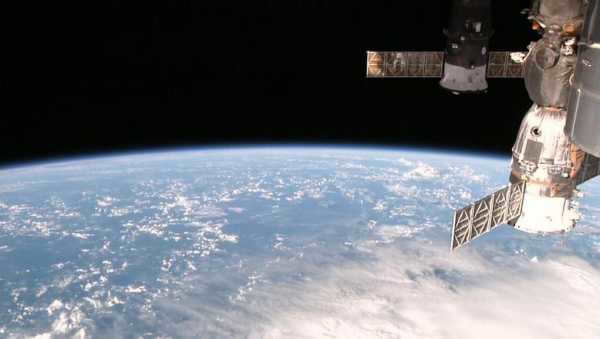
If you have limited time to watch, keep in mind that the webcam is available online 24/7, allowing you to always enjoy the captivating views of space. However, it is recommended to tune in during the astronauts’ work or when the spacecraft is docking for a more immersive experience.
Incidents Occurring During Space Missions
Despite the implementation of various safety measures on the space station and its servicing vessels, unfortunate incidents have occurred. One of the most significant accidents was the tragic event involving the space shuttle Columbia on February 1, 2003. Although the shuttle was not docked with the station and was on its own independent mission, this disaster resulted in a temporary ban on all subsequent space shuttle flights. The ban was only lifted in July 2005. As a result, the completion of the construction project was delayed, and the Russian Soyuz and Progress spacecraft became the only means of transporting astronauts and cargo to the orbiting station.
Additionally, in 2006, there was smoke detected in the Russian segment, and there were instances of computer failures in 2001 and twice in 2007. The autumn of 2007 proved to be particularly challenging for the crew as they had to address a broken solar panel that occurred during installation.
International Space Station (photo acquired by amateur astronomers)
By utilizing the information provided on this webpage, it is simple to determine the current location of the ISS. The station is easily visible from Earth, appearing as a bright moving star that travels relatively quickly from west to east.
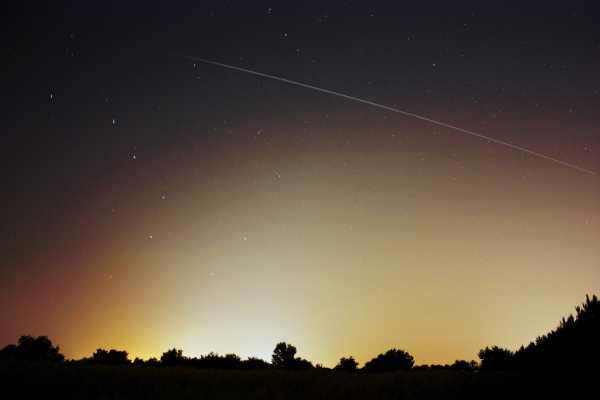
In a mesmerizing long exposure shot, the International Space Station (ISS) is beautifully captured.
Remarkably, some avid astronomy enthusiasts are able to capture stunning photographs of the ISS from our very own Earth.
One such remarkable photograph was taken on January 24, 2013, in Sydney, Australia.
These awe-inspiring images showcase remarkable clarity, allowing viewers to even spot docked spacecrafts and, if lucky, catch a glimpse of the astronauts themselves as they venture into the vastness of outer space.
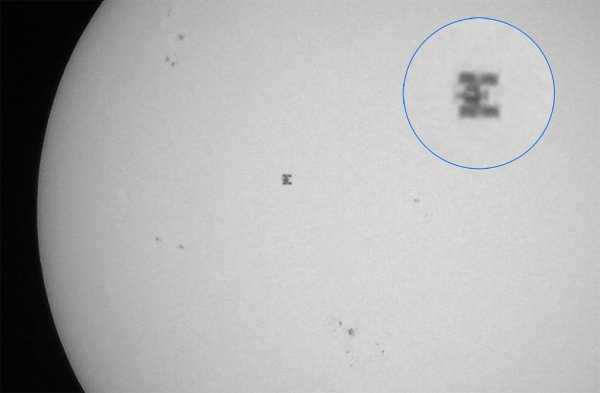

This image shows the Sun with the use of an H-alpha filter.
If you plan on observing it through a telescope, keep in mind that it moves quite fast. It would be beneficial to use a go-to pointing system that allows you to track the object without losing sight of it.
You can currently see the current path of the station in the provided graphic.
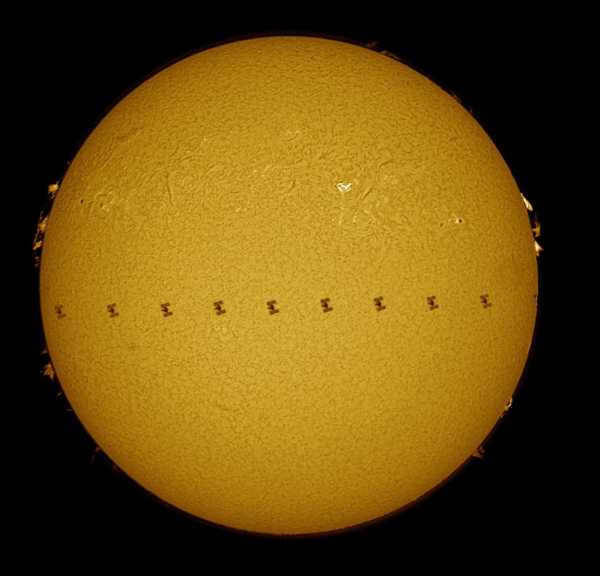

If you are unaware of how to view it from Earth or do not possess a telescope, this live video broadcast is available to you at no cost and is accessible at all times!
ISS Tracker – Map for Tracking the ISS
Data provided by the European Space Agency
Using this interactive chart, you can determine the time of the space station’s flyby. In the event that the weather is favorable and there are no clouds, you will have the opportunity to witness firsthand the mesmerizing glide of the station, which signifies the pinnacle of our civilization’s advancement.
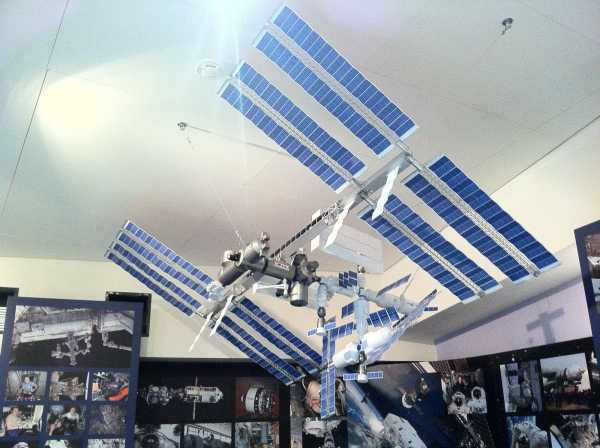
It is important to keep in mind that the space station’s orbit is inclined at approximately 51 degrees, resulting in it passing over cities such as Voronezh, Saratov, Kursk, Orenburg, Astana, and Komsomolsk-on-Amur. If you reside further north of this trajectory, the visibility conditions will be poorer or even non-existent. In reality, you will only be able to observe the space station above the horizon in the southern portion of the sky.
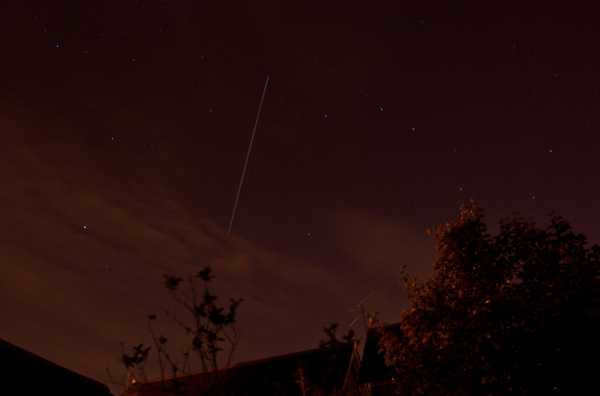
Flying in the presence of the Big Dipper constellation
When considering Moscow’s latitude, the optimal moment to witness this phenomenon is when the flight path aligns just above 40 degrees above the horizon, occurring after sunset and before sunrise.
A 3D perspective of the International Space Station (ISS) on June 15, 2013.
By the way, in case you were unaware, there is a free Android application available (in Russian) that can alert you ahead of time about the ISS passing over your location.
The aims and purposes of the global station
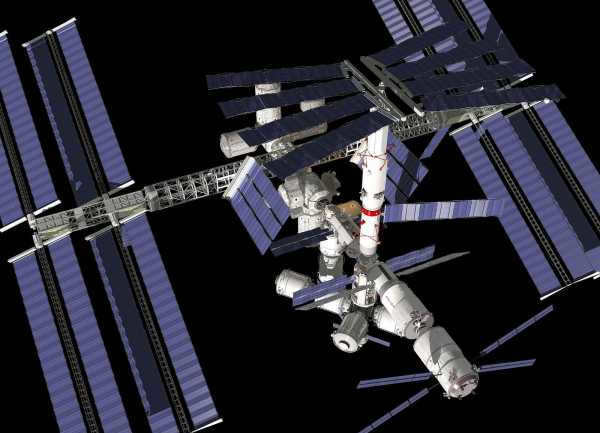
The creation of the station has a primary objective of facilitating various experiments and research that require the unique conditions of space, notably weightlessness, vacuum, and microgravity. It is essential to acknowledge that space radiation on the ISS, positioned at an altitude exceeding 420 kilometers, remains unaffected by Earth’s atmosphere. This factor significantly influences not only various scientific studies but also the well-being of the station’s inhabitants. The focal areas of research encompass fields such as biology (biomedical research and biotechnology), as well as physics and its subdisciplines, including astronomy and cosmology.
Scientific research relies on the utilization of different tools and apparatus, typically housed within laboratory facilities in scientific sectors.
Another portion of the equipment, which necessitates a vacuum, is affixed to the exterior of the station’s shielding. The orbit’s altitude is approximately 420 kilometers, enabling the utilization of a vacuum environment that is nearly unattainable in the most advanced laboratories on Earth. A web camera provides a clear view of the vast and empty expanse, where, aside from the presence of the Earth, Moon, and Sun, there exists a void permeated by various forms of cosmic radiation.
Collection of pictures showcasing the International Space Station
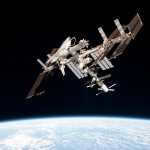
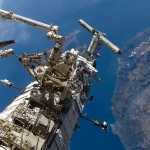
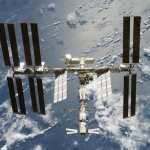
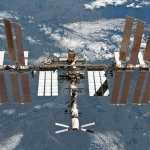
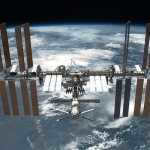
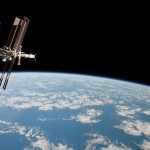
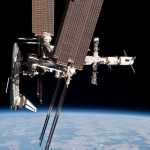
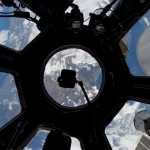
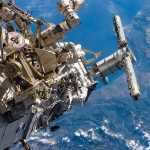
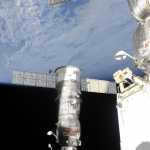
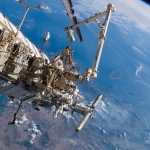
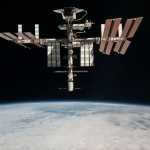
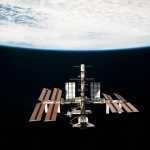
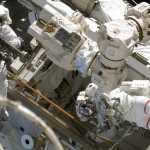
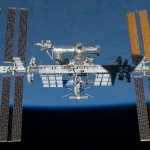
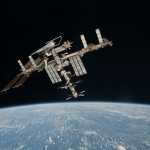
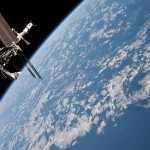
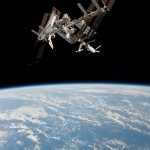
Take a look inside the International Space Station with this captivating video tour
Get a glimpse into the fascinating world of the International Space Station as astronaut Sunita Williams takes you on a virtual tour. Explore the intricate structure, discover the carefully planned interior layout, and catch a glimpse of life in space. We invite you to enjoy this exclusive video tour in Russian.
NASA TV Live
Watch NASA TV Live Stream
Explore the stunning photos of the station’s interior and exterior
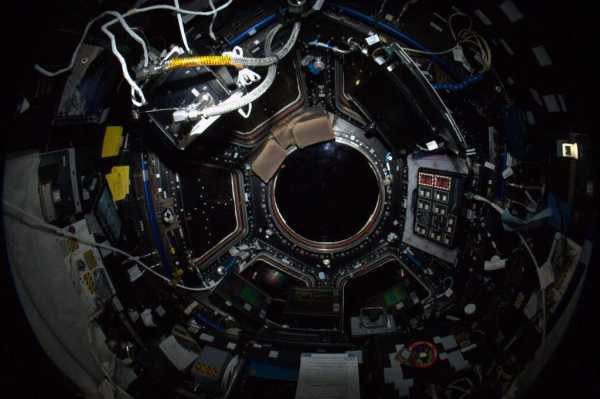
It is worth mentioning that despite the wide range of space entities and their incredible visual representations captured by both orbiting observatories and ground-based telescopes, it is particularly intriguing to explore what lies beyond our own planet.
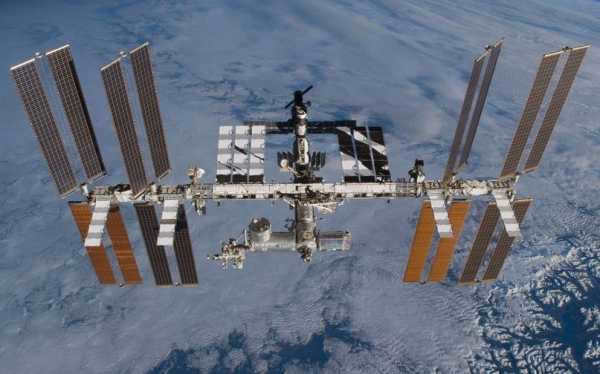
The view of the Earth from outer space resembles a sparkling diamond against a backdrop of velvet. The opportunity to witness this spectacle and appreciate the incredible beauty of the cosmos is truly invaluable.
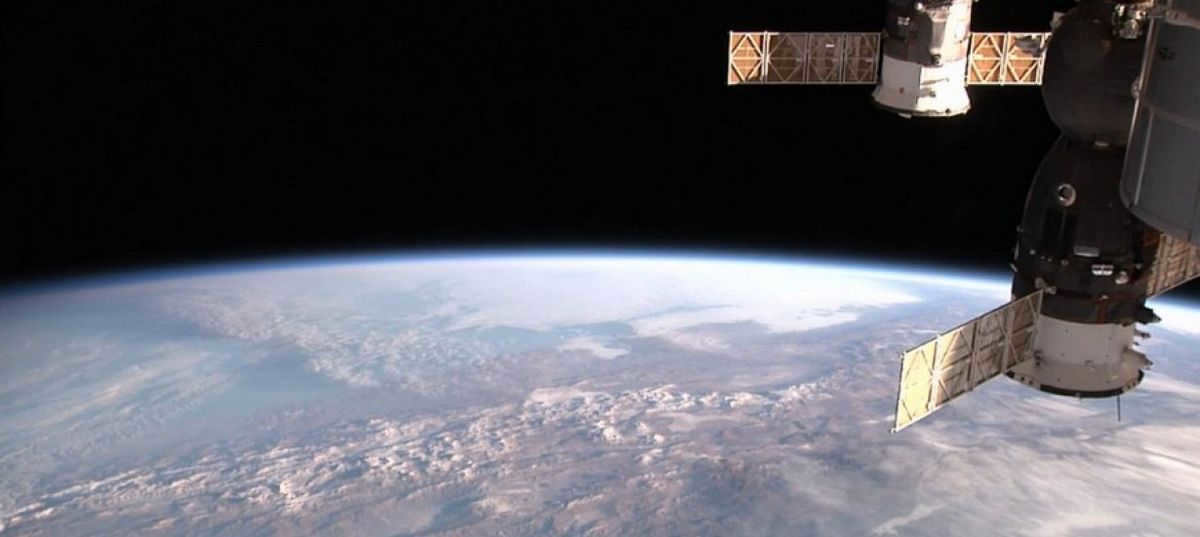
At an altitude of over four hundred kilometers above the Earth’s surface, the International Space Station (ISS) completes its orbit. It offers online live streams that allow viewers to witness the breathtaking view of our planet from space. Accessing the internet is the only requirement to enjoy this unique experience.
What is the International Space Station (ISS)?
The ISS is a manned orbital station consisting of 14 modular parts, which is utilized for a variety of scientific research. This remarkable structure not only obtained the designation of being international, but also involved the participation of 14 different countries, each contributing one module. It was launched into orbit in 1998. The ISS is operated and controlled from four centers situated in the United States, the Russian Federation, the European Union, and Japan.
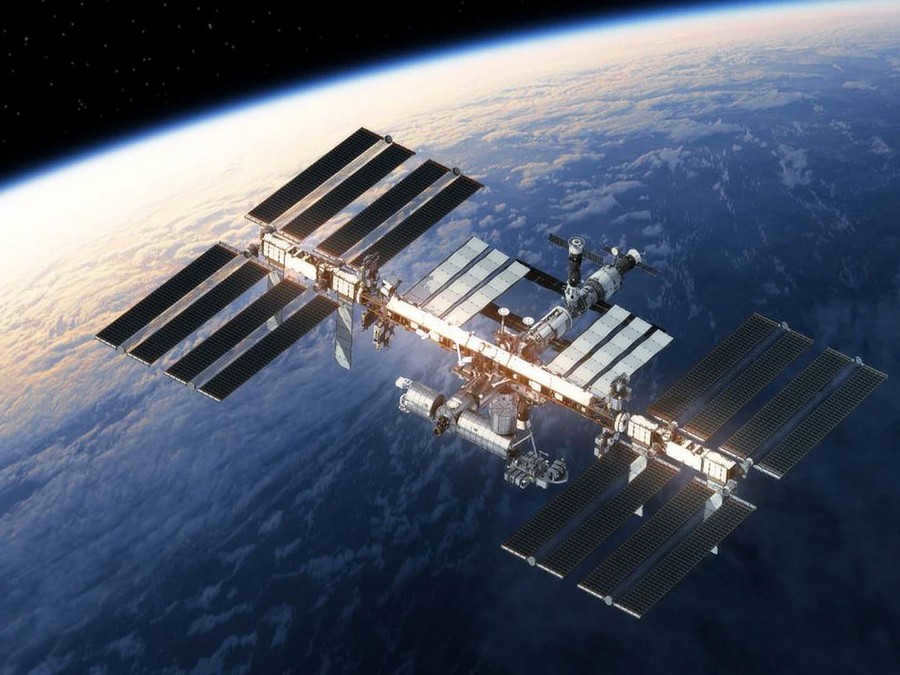
Currently, there are 6-7 individuals from various nations aboard the International Space Station. The space station orbits the Earth at a velocity of 27,700 km/h, completing a full revolution around the planet in just 90 minutes.
What is visible from the International Space Station (ISS)
The ISS is equipped with cameras that provide live streaming of Earth, offering viewers the opportunity to witness various natural phenomena such as hurricanes, volcanoes, the northern lights, and even stargazing from space. Depending on the current location of the ISS, one can observe different parts of the Earth’s surface through the online feed.
These cameras are strategically positioned on the exterior of the ISS, constantly capturing captivating views of our planet. Additionally, there are also surveillance cameras inside the station, enabling viewers to observe the daily life and work of the astronauts on board.
Live Streaming of the Earth from Outer Space
Originally, the cameras were solely intended for communication with the control centers, allowing only two locations to access live broadcasts: Korolev in Russia and Houston in the United States. However, in 2008, on its tenth anniversary, the Earth’s live stream from space became available to the public and continues to be broadcast to this day.
You can freely enjoy the live video feed at any time you wish. The cameras operate non-stop, although there may be moments when the International Space Station (ISS) enters a shadow and visibility is limited. Additionally, occasional technical maintenance or glitches may occur. During these instances, the screen may display a blue screen or the NASA logo. In such cases, your patience is all that’s needed as the feed will resume shortly.
You have the opportunity to observe the Earth from outer space via online streaming on any web browser, with Chrome and Firefox being the recommended options. If you are unable to view the broadcast on your current browser, you can try using one of these alternatives.
Live Crew Broadcast
During significant events, such as an astronaut venturing into outer space or the docking of new modules with the space station, there is a live crew broadcast available. Due to high demand, there may be occasional disruptions in the channel’s streaming during these live broadcasts.
Tracking the International Space Station (ISS)
If you are interested in observing a specific area of Earth from space in real-time, it is essential to keep track of the current location of the International Space Station. Fortunately, you can easily accomplish this by utilizing the ISS tracking feature on Google Maps.
Moreover, if you possess a telescope equipped with a go-to pointing system and have knowledge of its present whereabouts, you can even witness the ISS firsthand. Alternatively, it is also possible to spot the ISS with your naked eyes, as it appears as a luminous celestial body swiftly traversing the night sky.
Space tourism
With the growing popularity of online broadcasts showcasing the breathtaking views of Earth from space, more and more individuals are feeling compelled to witness this beauty firsthand. As a result, the concept of space tourism is currently gaining momentum. Although this idea was initially proposed in the 1960s, it remained nothing more than an unattainable dream at that time. However, with the establishment of the International Space Station (ISS), several tourist flights have already taken place. Nevertheless, the number of people who have had the opportunity to experience space travel remains remarkably small, with only seven individuals having made the journey thus far. The main reason for this limited number is the exorbitant cost associated with space tourism. Initially priced at $20 million per flight, the cost has since doubled, making it an even more exclusive experience. And if one wishes to venture beyond Earth’s atmosphere, an additional three million dollars is required.
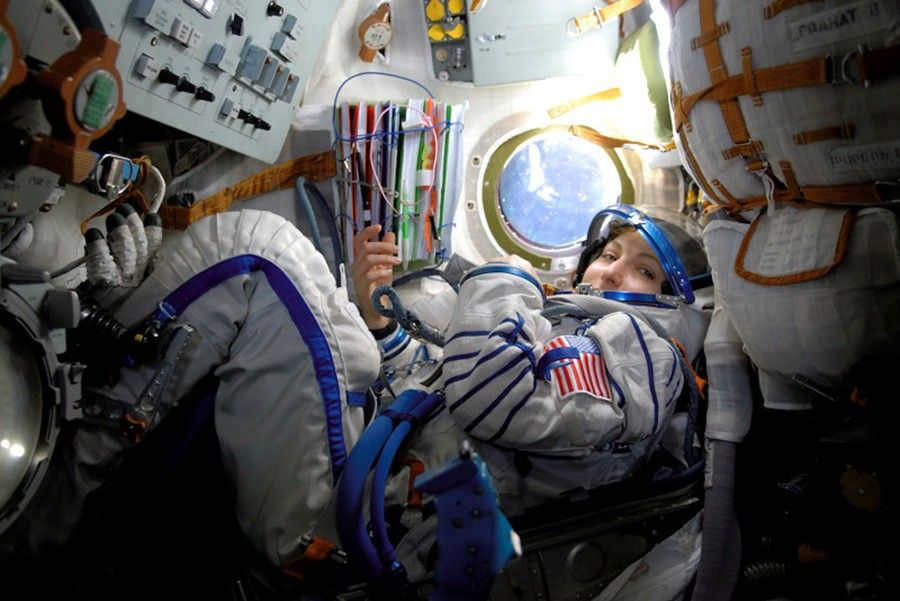
The field of space tourism is steadily progressing and becoming more affordable. Currently, efforts are underway to develop cost-effective methods for transporting tourists to an altitude of at least 100 kilometers above the Earth. However, it is important to manage expectations, as the price is not expected to dramatically decrease to a few hundred dollars. This extraordinary experience will still remain prohibitively expensive for the average person. Additionally, not everyone who desires to embark on a space journey will be eligible due to health considerations.
Considering these factors, live online broadcasts of Earth from space will continue to be the sole economical option for observing our home planet from an extraterrestrial perspective for the foreseeable future.
Nowadays, we have the opportunity to give a star as a gift and even consider purchasing a piece of land on the moon. Various companies are actively recruiting groups of space tourists. The curiosity for the unknown and the desire to explore beyond our limits are driving us to delve into the vastness of the universe.
Invme has compiled a selection of live broadcasts from space that will provide you with an insight into the current happenings on the International Space Station and within our solar system. These broadcasts aim to showcase the wonders of space without the need for complex scientific explanations.
Watching space online is much simpler than one might think.
Streaming live: experience the audio of a meteorite in real-time
When a meteorite enters the Earth’s upper atmosphere, it produces a brilliant streak of light and a trail of ionized particles that can stretch for several kilometers. The length and persistence of this trail depend on the size and speed of the celestial object.
Due to the reflective properties of ionized particles, radio waves can be detected and captured by a receiver. The sound emitted by a falling meteorite can be compared to that of a whistle. In Canada, there is a specialized transmitter that emits radio waves at a specific frequency. This transmitter captures the signal reflected from the meteor trail and broadcasts it online, allowing users to listen to the sound of a meteorite in real-time.
Live Streaming of Earth from the International Space Station (ISS)
Experience a live broadcast showcasing breathtaking views of our planet as captured from inside the ISS during the crew’s active duty hours. When the crew is not on duty, the screen displays a real-time online streaming of Earth from the ISS.
Be a part of the broadcast and listen to the intriguing conversations between the crew members and the control center. However, please note that the availability of the broadcast depends on two crucial factors. Firstly, the signal transmission from the cameras relies on the functioning of the solar panels. Since the ISS completes one orbit around the Earth in just 1.5 hours, half of this time is spent in the Earth’s shadow, rendering the solar panels ineffective. During this period, you may encounter a playback of a previously recorded broadcast or an OFFAIR message.
Secondly, if you observe a dark screen, it indicates that the ISS is currently in the Earth’s shadow.
Live streaming from space: Internal cameras of the International Space Station (ISS)
This is a live stream from the internal cameras of the International Space Station (ISS) located in the living compartment of the station. These cameras provide a glimpse into the astronauts’ living quarters, the Mission Control Center (MCC), and spacecraft docking. However, the availability of this online live stream from space depends on the station’s position in Earth’s orbit.
During the “dark time” when the station is not in direct sunlight, interviews with mission supervisors from Earth are often broadcasted. Occasionally, a live stream from the porthole is also connected, offering a view of the planet and the outer portions of the ISS.
To determine the optimal time for tuning in, you can refer to a map that displays the current position of the station and its trajectory.
Live Stream from Space: Real-Time View of Earth
This live camera feed provides an outdoor view of Earth from the International Space Station (ISS). One of its main advantages is the high-definition image quality, allowing viewers to see a wide range of the Earth’s surface. However, there are some drawbacks, such as potential interruptions in the feed when the solar panels obstruct the view or when the station passes over the oceanic regions.
The ISS offers a breathtaking perspective of our planet, showcasing its oceans, continents, rivers, mountains, lakes, cities, and even natural phenomena like lightning flashes, sunrises, and sunsets. Additionally, viewers can observe the movement of clouds across the planet and witness the swirling of winds.
Satellite space broadcast: NASA channel covering ISS and space
NASA’s broadcasting network is split into two segments: historical-educational and online streaming. Our focus is on the Media Channel, which provides live coverage of astronaut missions, station dockings, solar and lunar eclipses, press conferences, interviews, and news related to space exploration. Additionally, it features select episodes from the Roscosmos TV studio.
Every day, there is an hour dedicated to live broadcasting from the ISS. This includes conversations with astronauts, updates on station activities, and significant events. To ensure you don’t miss out, it is recommended to check the program schedule on the NASA website.
Live Feed from the SOHO Sun Observatory: Captivating Photos of Our Star
This unique collection of images is being broadcasted directly from space. Positioned at the first Lagrangian point of the Earth-Sun system, the SOHO Observatory houses multiple telescopes, each specialized in capturing different wavelengths of light.
One of these telescopes, the EIT ultraviolet, provides snapshots of the solar atmosphere, unveiling various phenomena occurring on the Sun’s surface at different temperatures. The cameras also reveal the intricate structure of the solar corona. Of particular interest are the prominences, which are luminous streams of matter suspended above the Sun’s surface by magnetic fields.
These stunning images are updated every hour and the video is composed of several meticulously captured photographs. Take a glimpse at how the Sun transformed throughout 2015:





